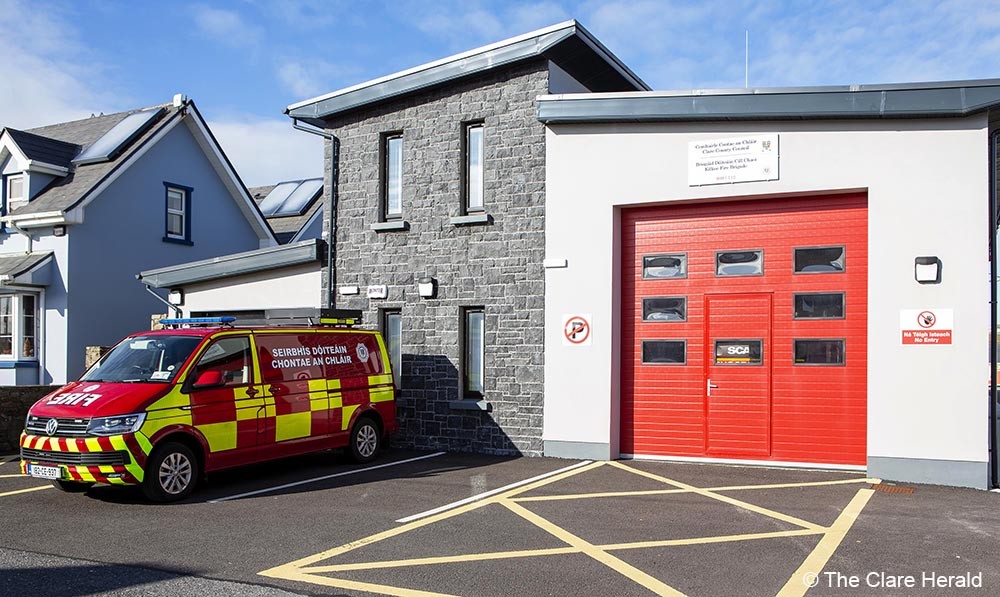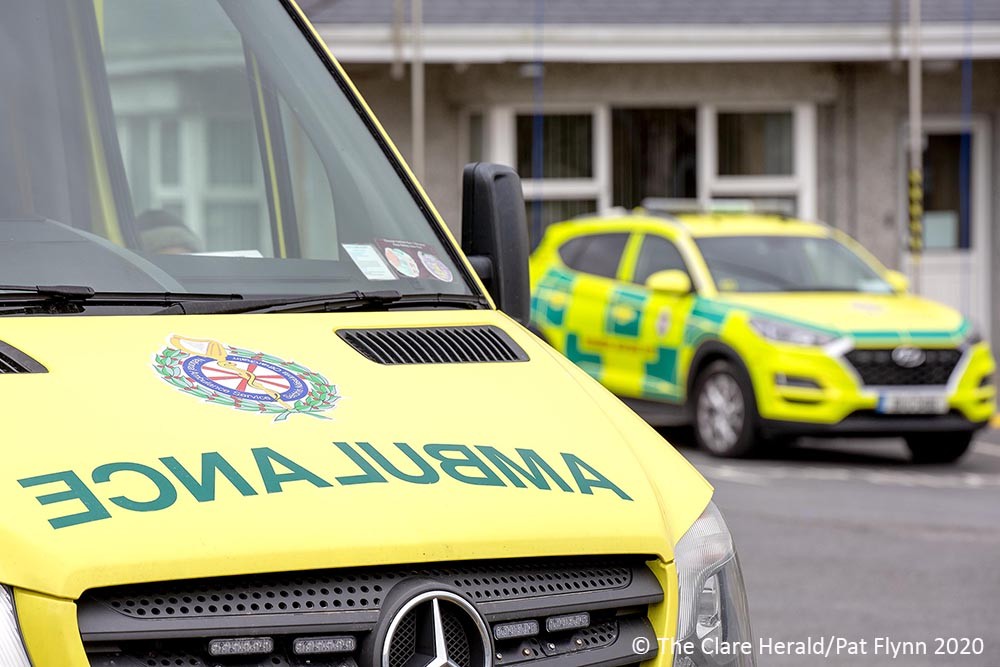
An ambulance was sent 175 kilometres from a station in Co Galway to a road traffic collision in Co Clare on Sunday afternoon.
A motorcyclist was hospitalised following the incident which occurred in Kilkee shortly after 4.30pm. The collision, which happened on Gratten Street in the West Clare town, involved a car and a motorcyclist.
It’s understood that there was no National Ambulance Service (NAS) resource available in Clare or Limerick at the time and that paramedics were dispatched from Carraroe in Connemara over two hours away.
A NAS rapid response advanced paramedic (AP) unit was also sent to the scene from Co Galway. It’s understood the AP was attending another call in Gort when they were mobilised to the Kilkee incident.
Firefighters from nearby Kilkee fire station were requested to attend the incident while an off-duty local paramedic also provided care for the casualty until an ambulance arrived.
The motorcyclist, who may have suffered a medical episode before the collision, was taken to hospital almost two and a half hours after the incident occurred. The driver of the car was uninjured.
West Clare Fianna Fáil Councillor Cillian Murphy said: “The incident yesterday in Kilkee shows quite clearly how poorly the NAS ‘dynamic deployment’ system serves the communities for whom it purports to provide emergency cover. I have long questioned the capacity of this system to deliver adequate emergency cover, especially out here on the periphery of the county, and incidents like this do very very little to change that view.”
“The system is utterly flawed, no ambulance in Kilrush from 2pm until 8pm yesterday. Meanwhile the Cararoe ambulance is tasked to Kilkee, and absent for over 5 hours at least… I wonder who covered Cararoe?
I don’t think it’s too much to ask our Oireachtas members demand a root and branch review of the system,” Cllr Murphy added.

This latest incident occurred just weeks after a patient was left waiting for five hours in a doctor’s surgery in Clare for an ambulance to be sent from Co Offaly.
Previously, an ambulance from Ennis was sent to a call in Carraroe Co Galway while another resource was sent from Tuam Co Galway to a road traffic collision in Lissycasey Co Clare.
A tourist lay in agony on the ground at the Cliffs of Moher for several hours after suffering a serious leg break while an ambulance was dispatched from Nenagh in Co Tipperary.
The National Ambulance Service operates a system of dynamic deployment where the nearest available resource is dispatched to an incident however paramedics have long argued that this is seriously flawed.
The National Ambulance Service did not answer any questions relating to Sunday’s specific incident when asked.
In a statement, a spokesperson said: “The call taking/dispatch function is operated by the National Ambulance Service National Emergency Operations Centre (NEOC) which operates across two sites, Dublin and Ballyshannon. NEOC utilises Advanced Medical Priority Dispatch System (AMPDS) using international standards in triaging and prioritising emergency calls.
NEOC dynamically deploys resources to areas where cover is required or to respond to incidents as they arise to ensure the nearest available resource responds to emergencies.
All 112/999 calls are clinically triaged based on the patient’s condition and the nature and location of other 112/999 calls in the area are understandably not apparent to callers when they call 112/999. The nearest available and most appropriate response is dispatched, with the most urgent calls prioritised.
The ambulance service operates on a national basis and mobilises responses to calls for assistance based on patient needs, ambulances may travel to various locations irrespective of their base as they are not confined to work in geographical areas. The current deployment model is designed around international best practice.
Not all 999 calls for ambulances are emergencies and response times targets – which are set out in the HSE’s National Service Plan – apply to ECHO (Life threatening cardiac or respiratory arrest) or DELTA (life threatening illness or injury, other than cardiac arrest) calls only. For example, a patient experiencing a heart attack is a DELTA call and encompassed by response time targets while a sports injury to the wrist or ankle is clinically triaged as not being a life threatening illness or injury. While the latter calls can be distressing for patients or their families, these calls are not encompassed by response time targets. This system ensures that life-threatening calls receive the most immediate response possible, while lower acuity calls may have to wait until a resource becomes available.
As of 1 October 2021, NAS has redeployed up to 45 Paramedics from COVID related work to emergency ambulance duty and a further 80 Paramedics are due to graduate from the National Ambulance Service College at year end. In addition NAS is recruiting an extra 100 Student Paramedics early next year who will commence a three year BSc. Programme at the college.
